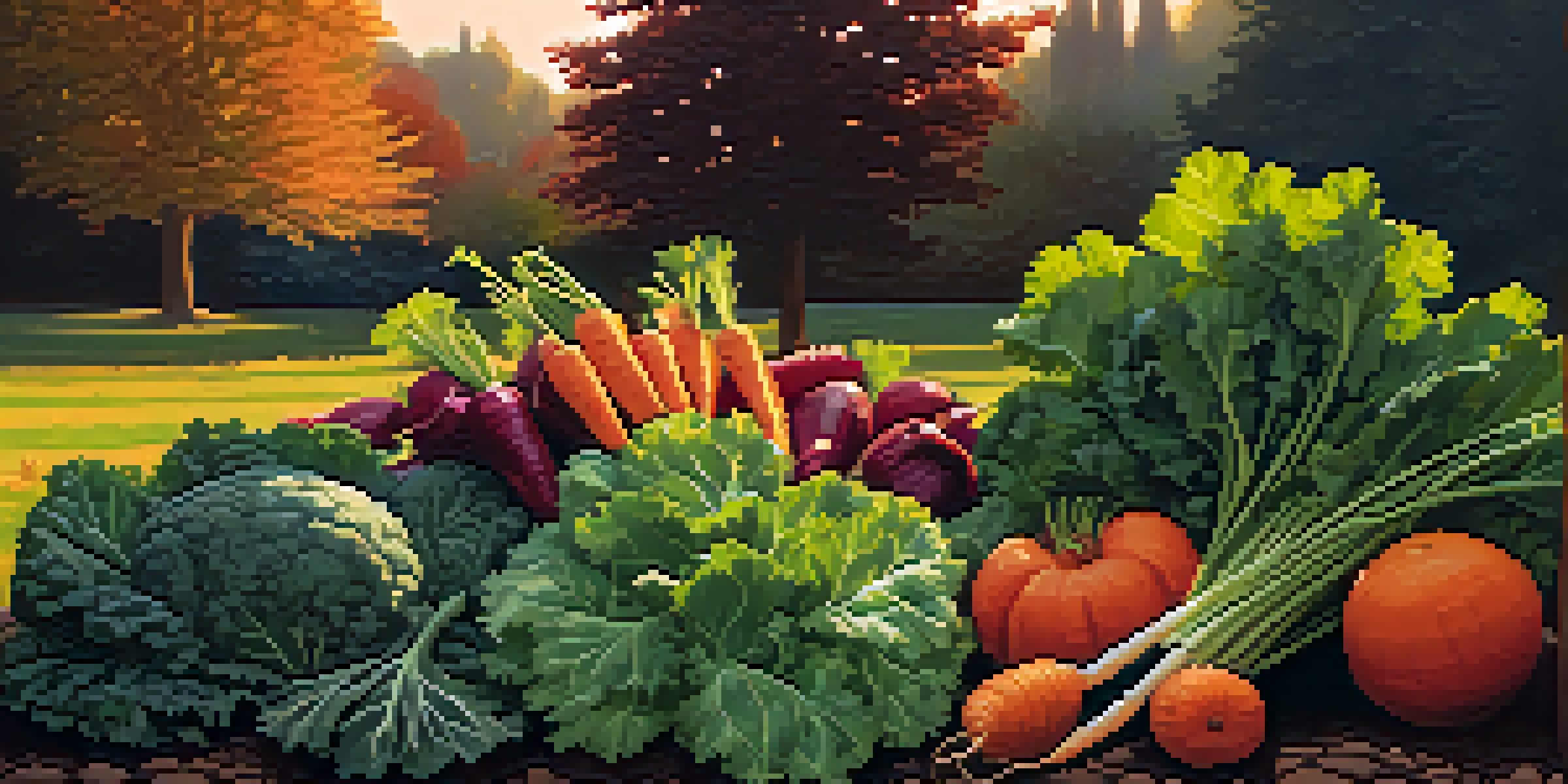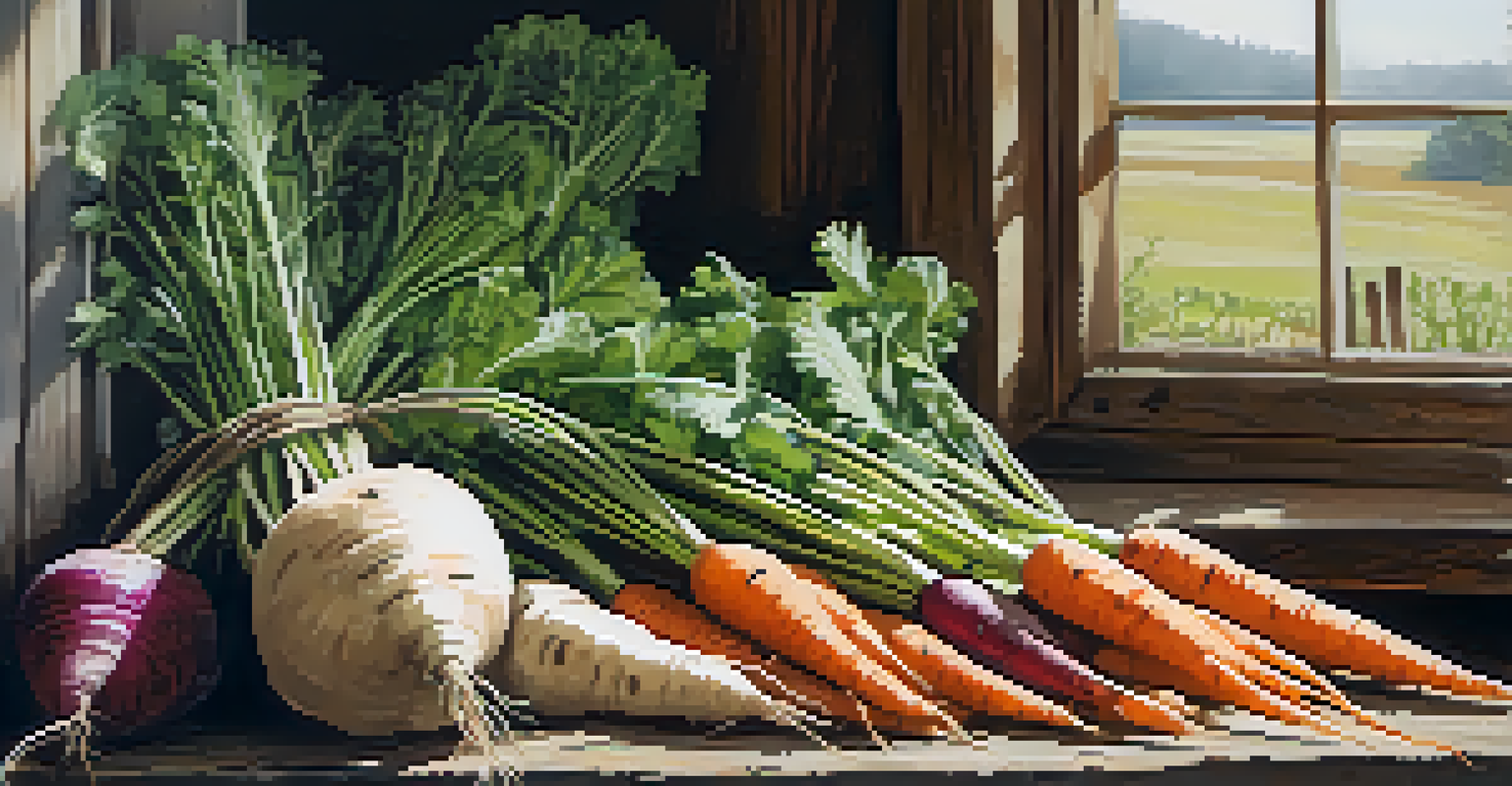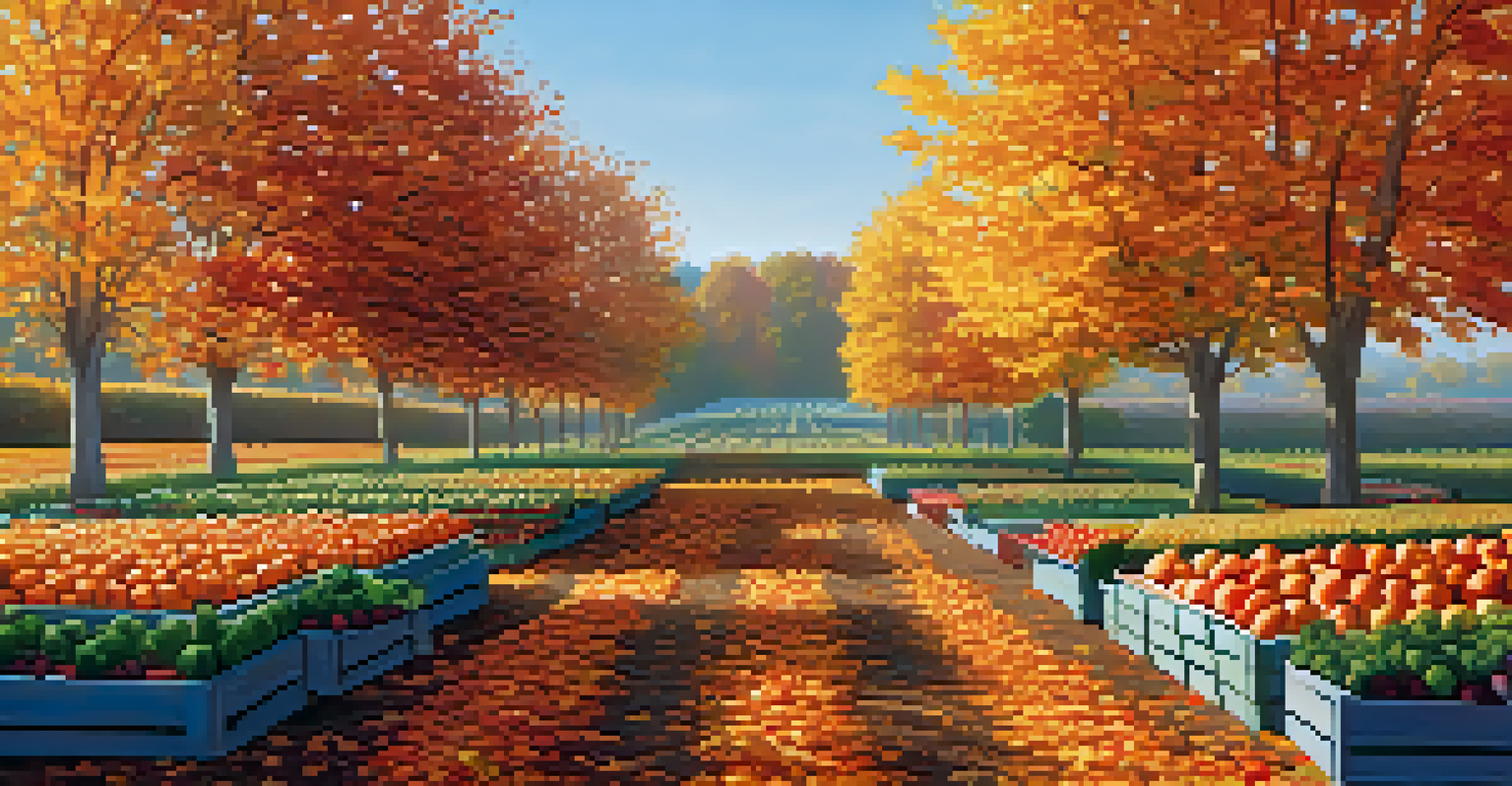Fall Planting Guide: Essential Vegetables for Autumn Gardens

Understanding the Benefits of Fall Planting
Fall planting isn’t just a way to extend your gardening season; it can also provide you with a bountiful harvest before winter sets in. Many vegetables thrive in the cooler temperatures of autumn, which can enhance their flavor and sweetness. Additionally, planting in the fall can help to improve soil health, as certain crops can fix nitrogen and enrich the earth.
To plant a garden is to believe in tomorrow.
By taking advantage of the fall growing season, you can enjoy fresh produce right up until the frost. This is particularly beneficial for those who love to cook with seasonal ingredients. Plus, planting in the fall can save you time in spring when gardening chores can pile up.
Ultimately, fall planting is not just practical; it's also an opportunity to experiment with different crops. Whether you’re a seasoned gardener or just starting out, the autumn months can be a great time to explore new varieties of vegetables.
Key Vegetables to Plant in Autumn Gardens
When it comes to autumn planting, certain vegetables truly shine. Cool-season crops like kale, spinach, and carrots are ideal as they can withstand the chill and often taste better after a frost. These vegetables can be sown directly into the soil in late summer to early fall, making them perfect for the autumn garden.

Other great options include radishes and turnips, which grow quickly and can be harvested in just a few weeks. If you have a bit of patience, consider planting garlic in the fall for a robust harvest the following summer. Each of these vegetables not only adds variety to your garden but also to your meals.
Fall Planting Boosts Harvest
Planting in the fall allows gardeners to enjoy fresh produce and enhances soil health.
Choosing the right vegetables can make all the difference in your fall gardening success. By selecting crops suited for cooler weather, you can ensure a thriving garden even as the temperatures drop.
Preparing Your Soil for Fall Planting
Before you start planting, it's crucial to prepare your soil properly. Start by removing any remnants of summer crops and weeds, which can compete with your new plants. Loosening the soil will help improve drainage and aeration, creating an ideal environment for your autumn vegetables.
Gardening adds years to your life and life to your years.
Adding compost or well-rotted manure can enrich the soil, providing essential nutrients to your plants as they grow. This not only supports plant health but also aids in water retention, which is vital as the weather gets cooler and rain becomes less frequent.
Lastly, consider testing your soil pH to ensure it’s in the right range for the vegetables you plan to grow. A simple soil test can guide you in amending your soil to create the perfect growing conditions.
Timing Your Fall Vegetable Planting
Timing is everything when planting in the fall. Generally, you want to plant cool-season crops about six to eight weeks before the first expected frost in your area. This allows enough time for the seeds to germinate and establish before the cold weather hits.
Using a gardening calendar specific to your region can help you stay on track. It’s also a good idea to keep an eye on the weather, as unseasonably warm or cold spells can affect your planting schedule.
Ideal Vegetables for Autumn
Cool-season crops like kale, spinach, and carrots thrive in the fall, providing delicious options for your meals.
Remember, fall planting isn’t just about getting seeds in the ground; it’s about ensuring they have the best chance to thrive as the temperatures drop.
Caring for Your Autumn Vegetables
Once you've sown your seeds or transplanted your seedlings, proper care is essential. Regular watering is important, especially in the early stages of growth. However, be cautious not to overwater, as cooler temperatures can lead to soggy soil, which can cause root rot.
Mulching around your plants can help retain moisture and regulate soil temperature. Plus, it can protect your plants from the first frost, giving them a little extra time to grow and mature.
In addition to watering and mulching, keep an eye out for pests and diseases. The cooler weather can sometimes bring out different pests, so be prepared to act quickly if you notice any issues.
Frost Protection Techniques for Late Harvest
As autumn progresses, the threat of frost becomes more real, and protecting your plants is crucial. One effective method is to cover your crops with row covers or garden fabric, which can trap heat and prevent frost damage. This simple step can extend your harvest season significantly.
If temperatures are expected to drop, you can also use old sheets or blankets as temporary covers for sensitive plants. Just remember to remove them during the day to let sunlight in and prevent overheating.
Protecting Plants from Frost
Using row covers and cold frames can help safeguard your autumn vegetables from frost, extending your harvest.
Another option is to use cold frames or cloches, which provide a mini greenhouse effect. These structures can create a warmer microclimate around your plants, allowing them to thrive even as the temperatures dip.
Harvesting and Storing Your Autumn Produce
Harvesting your autumn vegetables at the right time is key to enjoying their best flavor. For root vegetables like carrots and turnips, wait until after the first frost for a sweeter taste. Leafy greens, on the other hand, can be picked as needed, allowing you to enjoy fresh salads well into the fall.
Once harvested, proper storage is vital for extending the shelf life of your produce. Many root vegetables can be stored in a cool, dark place, while leafy greens should be kept in the refrigerator to maintain freshness.

Don’t forget to enjoy your harvest! Incorporating your autumn vegetables into seasonal recipes can make the most of your efforts and provide delicious meals for your family.